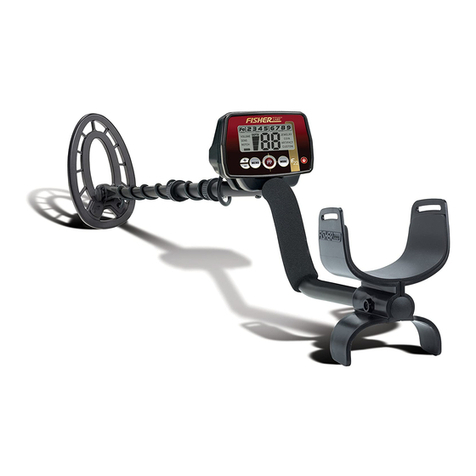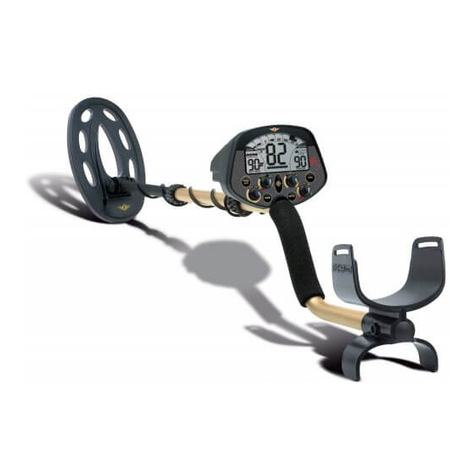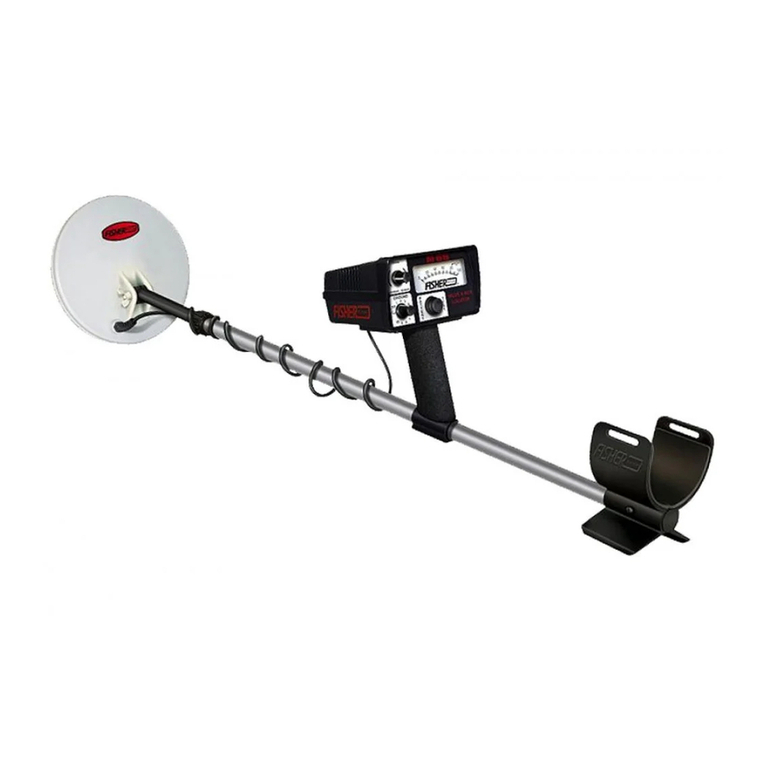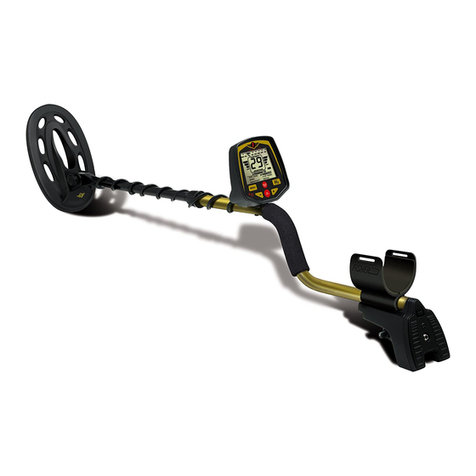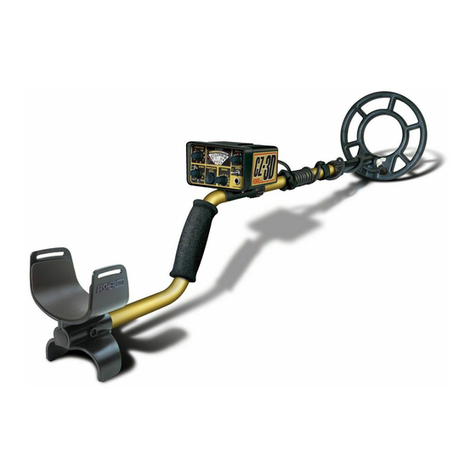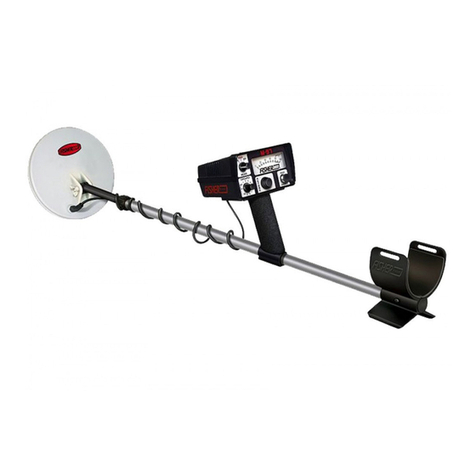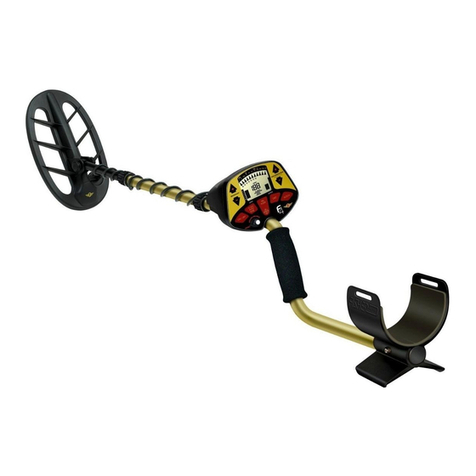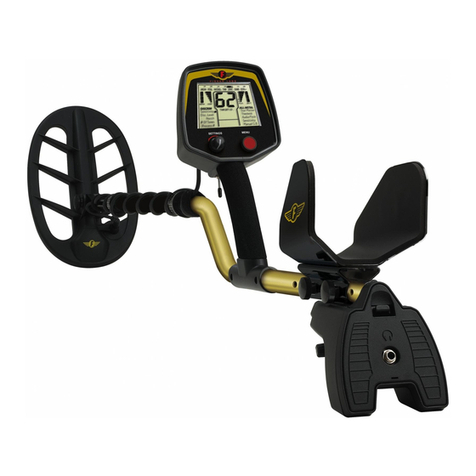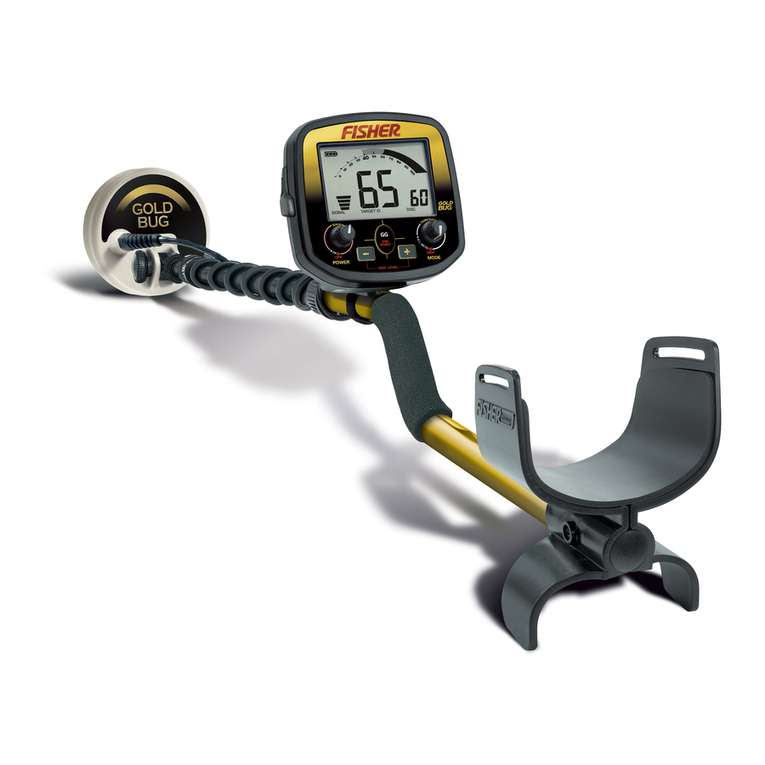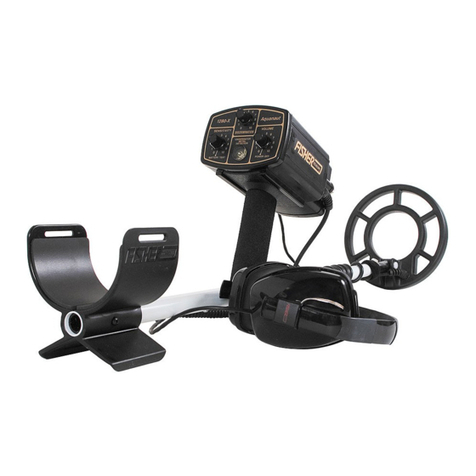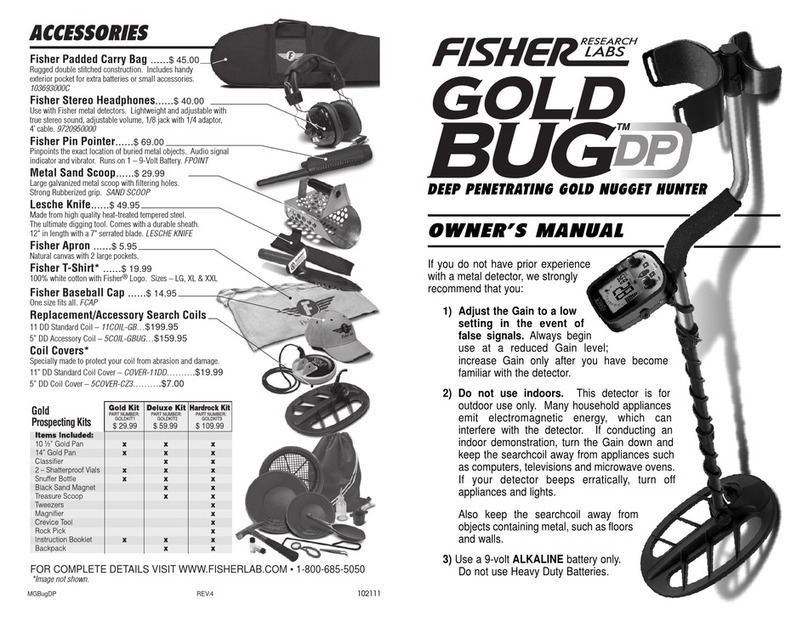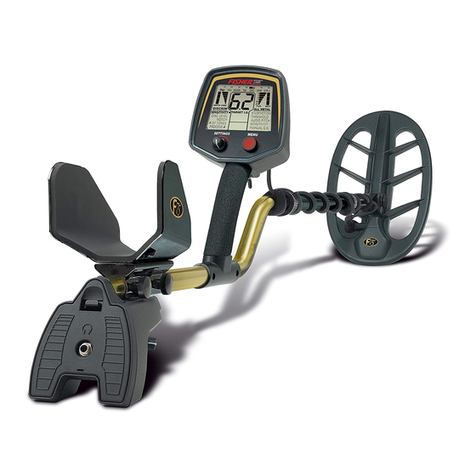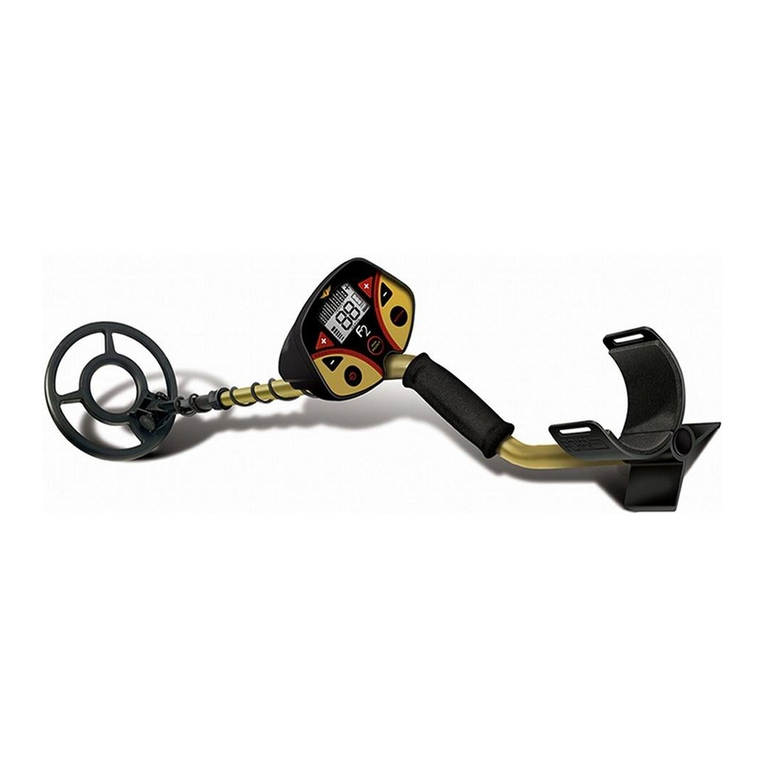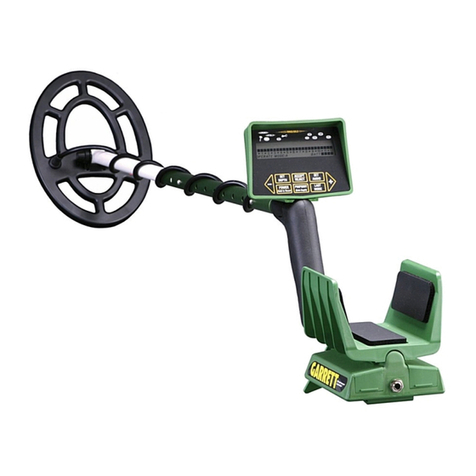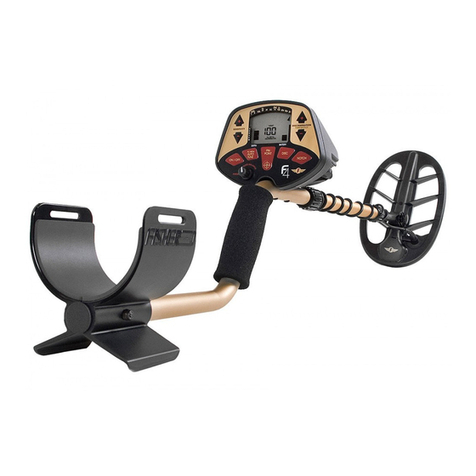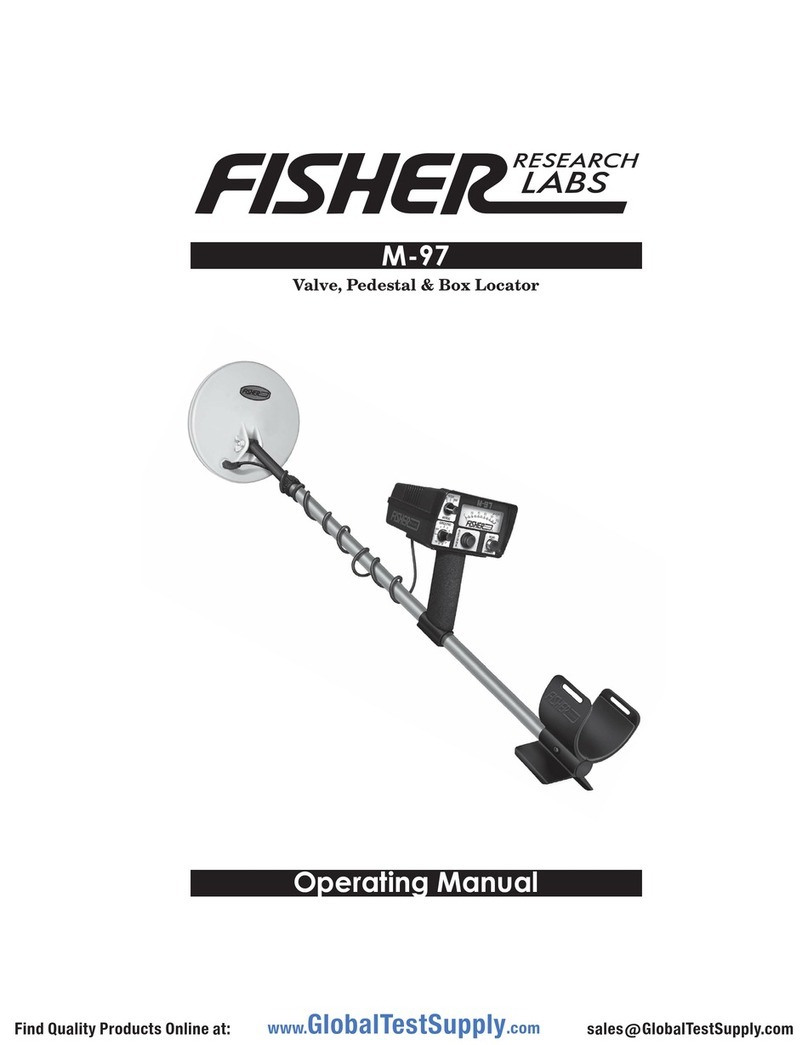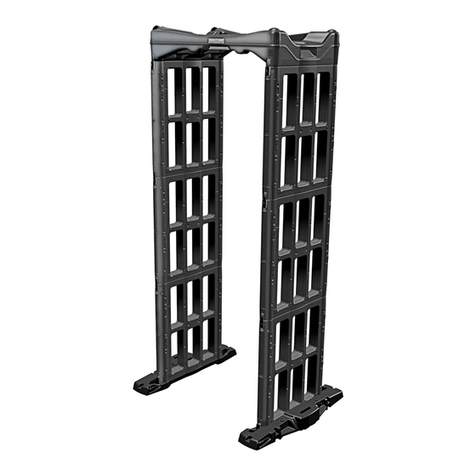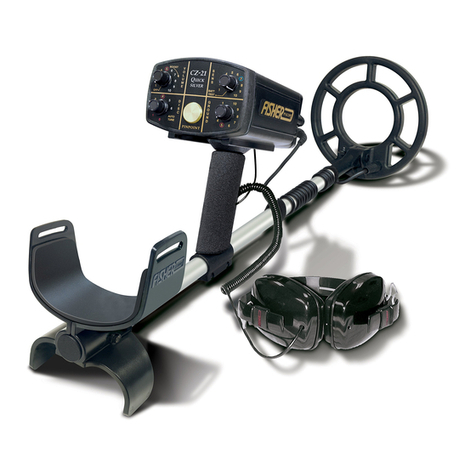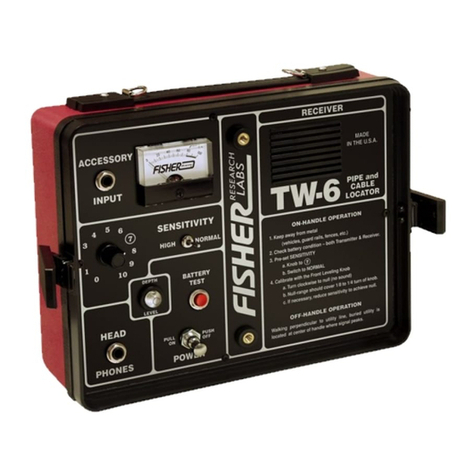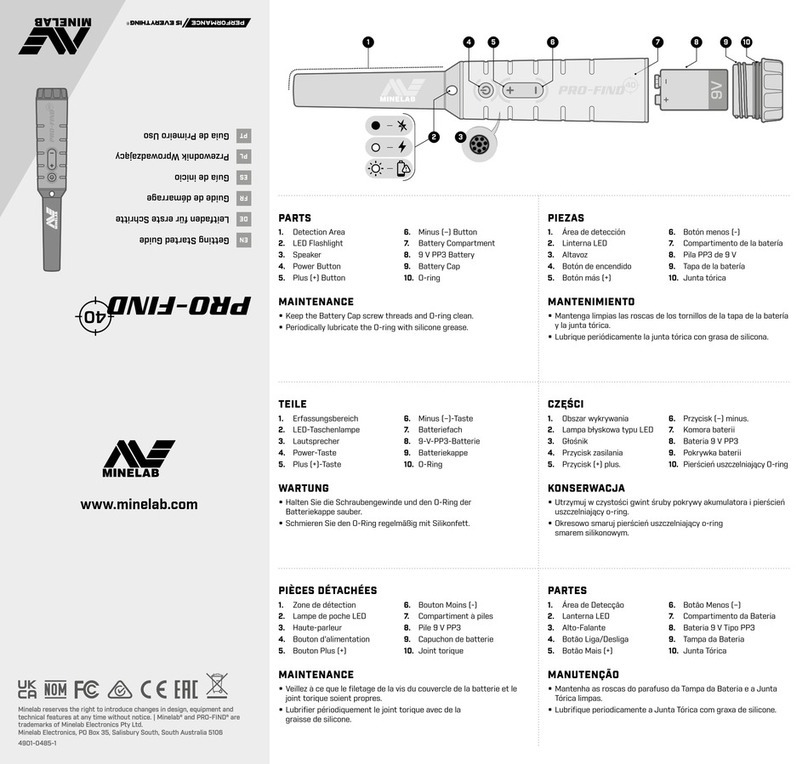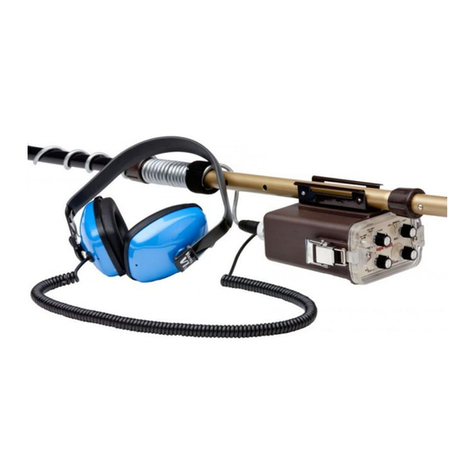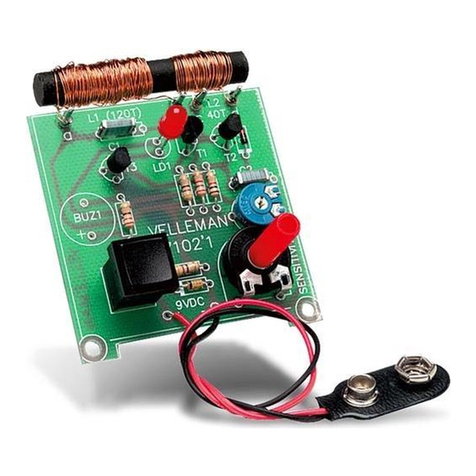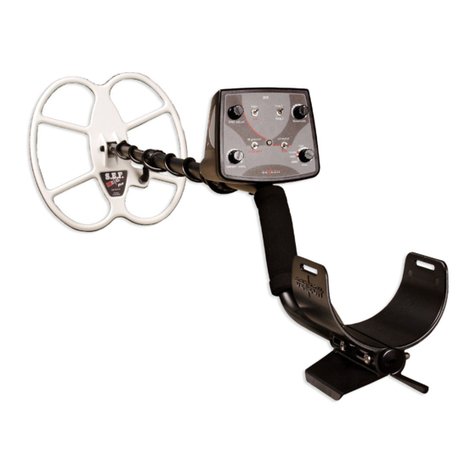7
7
T
T
h
h
e
e
o
o
p
p
e
e
r
r
a
a
t
t
i
i
n
n
g
g
c
c
o
o
n
n
t
t
r
r
o
o
l
l
s
s
a
a
r
r
e
e
a
a
s
s
f
f
o
o
l
l
l
l
o
o
w
w
s
s
:
:
SENSITIVITY + AND –
These controls change the detector’s sensitivity;
higher settings enable detection of deeper
targets. At power-up, the detector is pre-set to
75% of maximum sensitivity. At minimum, the
sensitivity is 35% of maximum. With each press of
the + or – touch pads, the sensitivity level is
displayed on the bar graph on the left of the
display. Upon reaching the minimum or maximum
sensitivity setting, the detector will beep twice.
While higher levels of sensitivity enable detection of deeper targets,
operation at high levels of sensitivity make the detector m
m
o
o
r
r
e
e
s
s
u
u
s
s
c
c
e
e
p
p
t
t
i
i
b
b
l
l
e
e
t
t
o
o
e
e
l
l
e
e
c
c
t
t
r
r
o
o
m
m
a
a
g
g
n
n
e
e
t
t
i
i
c
c
i
i
n
n
t
t
e
e
r
r
f
f
e
e
r
r
e
e
n
n
c
c
e
e
.
.
Higher sensitivity settings can also lead
to false signals in difficult ground conditions. Use lower sensitivity settings
to suppress interference or false signals from soil minerals when necessary.
I
I
f
f
t
t
h
h
e
e
d
d
e
e
t
t
e
e
c
c
t
t
o
o
r
r
“
“
C
C
h
h
a
a
t
t
t
t
e
e
r
r
s
s
”
”
,
,
r
r
e
e
d
d
u
u
c
c
e
e
s
s
e
e
n
n
s
s
i
i
t
t
i
i
v
v
i
i
t
t
y
y
.
.
AUTO TUNE (All Metal)
P
P
r
r
e
e
s
s
s
s
t
t
h
h
i
i
s
s
p
p
a
a
d
d
a
a
n
n
d
d
“
“
A
A
L
L
L
L
M
M
E
E
T
T
A
A
L
L
”
”
a
a
p
p
p
p
e
e
a
a
r
r
s
s
o
o
n
n
t
t
h
h
e
e
d
d
i
i
s
s
p
p
l
l
a
a
y
y
This mode is a ground-balanced all-metals
motion search mode. This mode offers the
maximum amount of sensitivity under most
ground conditions. The search coil must be in
motion to detect metal. One monotone sound
is emitted. No discrimination or target
identification is possible in this mode.
Use the S
S
e
e
n
n
s
s
i
i
t
t
i
i
v
v
i
i
t
t
y
y
or T
T
h
h
r
r
e
e
s
s
h
h
o
o
l
l
d
d
controls to change the sensitivity or
background hum. Maximum sensitivity to buried metal objects is
achieved with a slightly audible background hum.
T
T
o
o
a
a
c
c
h
h
i
i
e
e
v
v
e
e
a
a
n
n
a
a
u
u
d
d
i
i
b
b
l
l
e
e
b
b
a
a
c
c
k
k
g
g
r
r
o
o
u
u
n
n
d
d
h
h
u
u
m
m
:
:
1
1
.
.
Press AUTO TUNE pad to enter this mode.
2
2
.
.
Press S
S
e
e
n
n
s
s
i
i
t
t
i
i
v
v
i
i
t
t
y
y
+
+
or -
-
pads until you reach a desired setting.
This sensitivity setting may be the highest “quiet” setting, or you may
hear a faint background hum.
3
3
.
.
Press T
T
h
h
r
r
e
e
s
s
h
h
o
o
l
l
d
d
+
+
o
o
r
r
-
-
pad until you reach a comfortable volume level.
The Sensitivity control works like a course adjustment in this mode.
The Threshold control works like a fine adjustment in this mode.
The AUTO TUNE mode must be ground-balanced to eliminate interfering
signals from soil minerals. See the section on ground balancing for a
description of this procedure.
CONTROL PANEL
1
1
4
4
DEPTH AND TARGET DISPLAY
READING THE DISPLAY
The Liquid Crystal Display (LCD) shows
the PROBABLE identification of the
targeted metal, as well as the PROBABLE
depth of the target, in inches.
An arrow will illuminate under the
target category where an object is
best classified, and stay illuminated
until another target is identified.
The detector will normally register a
repeating, unchanging target
identification when a buried target
has been located and identified. If,
upon repeated passes over the same
spot, the target identification reads
inconsistently, the target is probably a
trash item, oxidized metal, or too
deep to be classified accurately. With
practice, you will learn to unearth
only the more repeatable signals.
The segment identifications are highly
accurate, when detecting the objects
described on the label. However, if
you register in a given category for an
unknown buried object, you could be
detecting a metallic object other than
the object described on the label, but
with the same metallic signature. Also,
the greater the distance between the
target and the coil, the less accurate
the target identification.
G
G
O
O
L
L
D
D
T
T
A
A
R
R
G
G
E
E
T
T
S
S
Gold objects will
register on the left side of the LCD scale.
Gold will register depending upon its
size. The smaller the gold object, the
further to the left it will register.
G
G
o
o
l
l
d
d
f
f
l
l
a
a
k
k
e
e
s
s
will register under Iron-1
S
S
m
m
a
a
l
l
l
l
g
g
o
o
l
l
d
d
i
i
t
t
e
e
m
m
s
s
will register under
Iron or 5¢/PT.
M
M
e
e
d
d
i
i
u
u
m
m
-
-
s
s
i
i
z
z
e
e
d
d
g
g
o
o
l
l
d
d
i
i
t
t
e
e
m
m
s
s
will
register under PT or S-cap.
L
L
a
a
r
r
g
g
e
e
g
g
o
o
l
l
d
d
i
i
t
t
e
e
m
m
s
s
will register under
S-cap or Zinc.
S
S
I
I
L
L
V
V
E
E
R
R
T
T
A
A
R
R
G
G
E
E
T
T
S
S
:
:
Silver objects will
normally register to the right of the
scale, under 10¢, 25¢, 50¢, or $1,
depending on the size of the object.
The larger the object, the farther to
the right it will register.
I
I
R
R
O
O
N
N
:
:
Ferrous objects will register on
the far-left side of the target
identification scale. 1, or 2 indicates
the relative size of iron objects. Small
nails, for instance, will usually
illuminate the Iron-1 arrow whereas
large structural ferrous objects will
usually illuminate the Iron-2 arrow.
Objects in this category could be
worthless scrap, or a more valuable
iron relic.
5
5
¢
¢
/
/
P
P
T
T
:
:
Nickels and most newer pull-
tabs(those that stay attached to the
can) will register here.
P
P
T
T
(
(
p
p
u
u
l
l
l
l
-
-
t
t
a
a
b
b
s
s
)
)
:
:
Pull-tabs from older
beverage cans will register here. Few
newer pull-tabs will also register here.
Many gold rings will also register here.
S
S
C
C
(
(
S
S
c
c
r
r
e
e
w
w
C
C
a
a
p
p
s
s
)
)
:
:
Screw caps from
glass bottles will register here. Large
gold rings, like a class ring, could also
register here. Some non-U.S. coins will
also register here.
Z
Z
I
I
N
N
C
C
/
/
1
1
¢
¢
:
:
Newer pennies (post-1982)
will register here. Many non-U.S. coins
of recent vintage will also register
here.
F4manual-SPREADS(20pg).qx 5/30/07 4:44 PM Page 7










